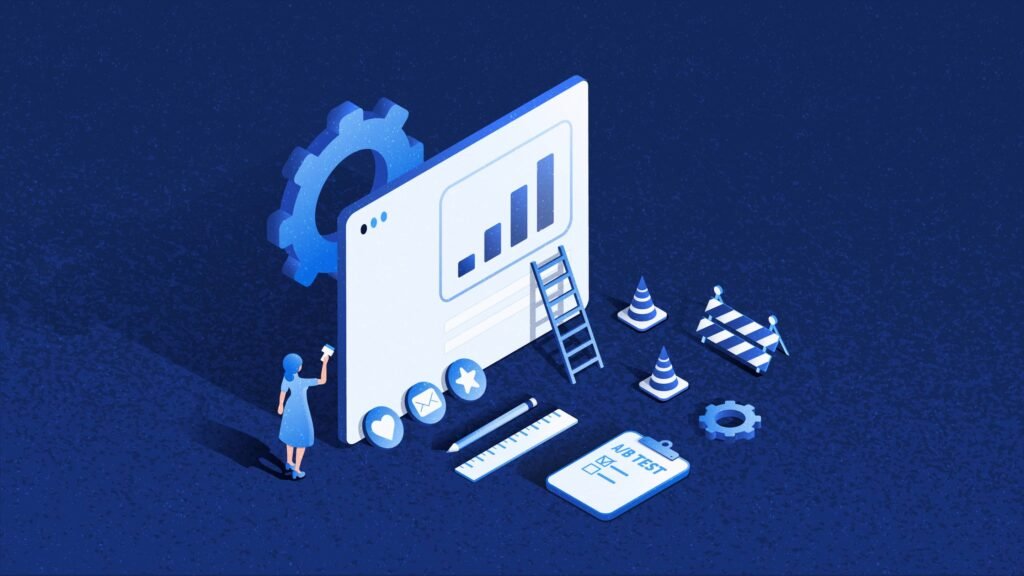Your website is more than just an online presence; it’s a powerful tool for driving conversions. Whether you’re trying to get visitors to sign up for your newsletter, download a resource, or make a purchase, your website’s design, content, and user experience can make all the difference. Optimizing your website for maximum conversions isn’t about making drastic changes—it’s about making smart, data-driven adjustments that improve user engagement and increase the likelihood of conversion. So, how can you fine-tune your site to turn visitors into customers? Let’s break it down.
Start with Clear and Compelling CTAs
Your call-to-action (CTA) is the gateway to conversions. If visitors can’t easily find or understand what you want them to do, you’re likely missing out on valuable opportunities. A well-placed, clear, and compelling CTA can be the difference between a user leaving your site or taking the desired action.
When crafting your CTA, be direct and specific. Avoid vague phrases like “click here” or “submit.” Instead, use language that tells visitors exactly what they’ll get and how it benefits them. For example, “Download Your Free Guide” or “Start Your Free Trial” makes it clear what’s in it for the user.
Placement matters too. Make sure your CTAs are visible without being overwhelming. Consider placing them at the top of the page, in the middle of content, and as part of the conclusion. You want them to be easy to find but not so frequent that they disrupt the user experience.
Improve Site Speed and Mobile Responsiveness
In today’s fast-paced digital world, people expect websites to load quickly. If your site takes more than a few seconds to load, visitors are likely to leave before they even see what you have to offer. Not only does a slow website negatively impact user experience, but it also affects your search engine rankings.
To optimize for speed, compress images, leverage browser caching, and consider using a content delivery network (CDN) to reduce server load times. Tools like Google PageSpeed Insights can help you identify areas where your site is lagging and suggest improvements.
Mobile responsiveness is equally important. More people are browsing and shopping on their phones than ever before, and if your website isn’t optimized for mobile devices, you’re losing out on a significant portion of potential customers. A mobile-friendly design that adapts seamlessly to different screen sizes not only improves user experience but also boosts your chances of ranking higher in search results.
Simplify Your Navigation
A confusing or cluttered navigation menu can frustrate users and lead to higher bounce rates. Visitors should be able to find what they’re looking for quickly and easily. Simplify your navigation by limiting the number of menu items and organizing your pages logically. Keep it clean and intuitive so users don’t have to dig through unnecessary layers to find what they need.
Consider using dropdowns or mega menus if you have a lot of content, but be cautious not to overdo it. The goal is to guide users toward conversion points with as few clicks as possible.
Also, remember the importance of internal linking. Strategic internal links not only help users navigate your site more effectively but also improve your SEO by helping search engines understand the structure of your website. These small changes can go a long way in keeping users engaged and guiding them through the buyer’s journey.
Optimize Your Content for Engagement
Your website content should do more than just fill space—it should engage and guide users toward conversion. Start by ensuring your content speaks directly to your target audience’s needs and pain points. Use persuasive language that resonates with them, addressing their problems and showing how your product or service can provide a solution.
Long, blocky paragraphs can discourage readers, so break up your content with headings, bullet points, and visuals. Not only does this make it easier to scan, but it also keeps users engaged longer.
Incorporating video can also be a game-changer. People are naturally drawn to video content, and it’s often more effective at conveying complex information quickly. A product demo, explainer video, or customer testimonial video can help users better understand your offering and make a purchase decision faster.
Additionally, optimizing your content for SEO ensures that search engines understand what your page is about, helping you attract more organic traffic. Pairing strong content with a strategic SEO approach—including keywords, meta descriptions, and backlink campaigns—can significantly enhance both your traffic and conversions.
Optimizing your website for maximum conversions doesn’t require a complete overhaul—it’s about making thoughtful, strategic changes that enhance the user experience and guide visitors toward taking action. By focusing on clear CTAs, improving site speed, simplifying navigation, leveraging social proof, optimizing content, and testing regularly, you can create a website that not only attracts visitors but also converts them into loyal customers. Start optimizing today and watch your conversion rates climb.




